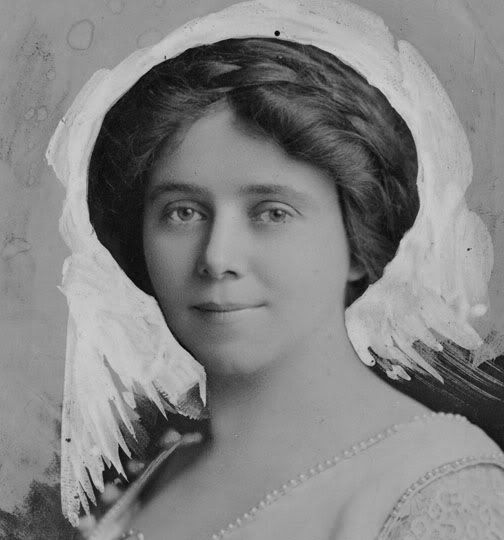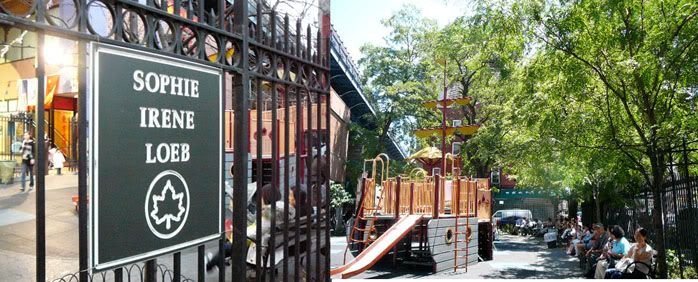
It's on the east side of Market Street, between Henry and East Broadway

In addition to the park above, there's a fountain in Central Park named after her. from wikipedia:
Sophie Irene Loeb (July 4, 1876, Rovno / Rivne, Volhynia, Russia (now Ukraine) - 1929) was a US journalist and social-welfare advocate.
She was born Sophie Irene Simon.
She was the president of the Board of Child Welfare of New York for seven years, and in 1921 she established the first child welfare building. In 1924, she became president of the Child Welfare Committee of America.
SOPHIE IRENE LOEB FOUNTAIN
James Michael Levin Playground, Central Park
Frederick George Richard Roth (1872–1944) created this decorative, reinforced concrete drinking fountain inspired by Lewis Carroll’s children’s story Alice in Wonderland (1865). The fountain commemorates newspaperwoman and social worker Sophie Irene Loeb (1876-1929), who was the founder and first president of the Child Welfare Board of New York City. Loeb is recognized in this context for her support of recreational opportunities for children in Central Park.
In 1926 philanthropist August Heckscher (the grandfather of the Parks Commissioner of the same name) pledged funds to create what would become later known as James Michael Levin Playground. Loeb campaigned fervently for the construction of the playground and was appreciated by the Parks community for her efforts. The fountain was commissioned by Parks when it rebuilt the playground in 1935, and it was dedicated in 1936 in Loeb’s memory. Roth is well known for his animal sculptures and limestone reliefs that appear in and around both the Central and Prospect Park Zoos. Some of his well-known works include Dancing Bear and Dancing Goat (both 1937) at the Central Park Zoo and Balto (1925), also in Central Park.
Born in Russia, Sophie Irene Simon immigrated with her family to the United States when she was six years old. Soon after settling in Pennsylvania, Loeb’s father died, leaving the family with no means of support. As the eldest of six children, sixteen-year-old Sophie was forced to work in a store to help her mother support their large family. These financial struggles prompted Loeb’s later concern for social reform and welfare.
After graduating from high school, Sophie began teaching young children. In 1896, she married Anselm Loeb, a storeowner and her former employer. Marriage freed Sophie from teaching and allowed her to pursue other interests such as art, poetry, and writing. Her writing came to the attention of several publishers, including those at the New York Evening World. In 1910, Loeb moved to New York City after divorcing her husband. Keeping the surname Loeb, she began working at the Evening World as a reporter.
Loeb focused her journalistic and social attentions on welfare for widowed mothers. New York City had struggled for years over the idea of civic versus state economic relief for “destitute mothers.” The City maintained homes for children of widowed mothers, but many women refused to send their children to these homes, leaving them to the mercy of private charities. Believing that private aid was insufficient, Loeb sought state relief as well. She wrote several articles that argued for the establishment of such a system, and worked closely with Hannah Bachman Einstein, who founded the Widowed Mothers’ Fund Association in 1909. Elected President of the New York City Welfare Board in 1923, Loeb helped to found the Child Welfare Committee of America in 1924. She also fought for immigrant use of New York City schools as civic centers; and the cleaning and fireproofing of movie theaters; installation of public baths; funding of school lunches, and support for housing reform.
Ten years after Loeb’s death, Congress amended the Social Security Act of 1935 to include provisions for the protection of widows and children of laborers. Although she died childless, Loeb nevertheless was known as the “godmother of American children.”

No comments:
Post a Comment